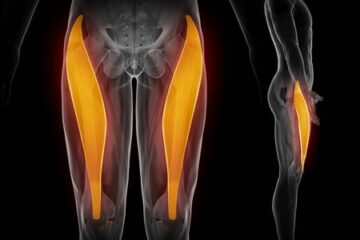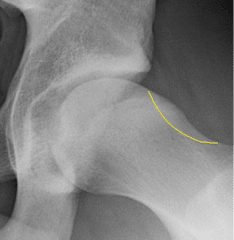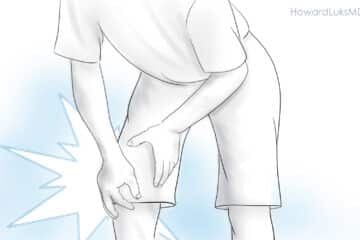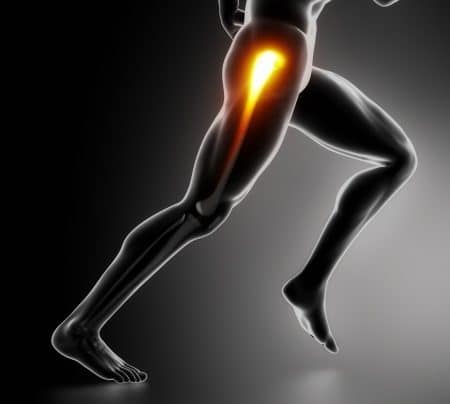
Hip and groin pain while running is a fairly common issue. Groin pain in a runner can be due to the muscles around the hip, the tendons around the hip, the bones that make up the hip and the labrum. Many hip and groin injuries are minor and you can continue running after a brief recovery period. As we will discuss, other causes of hip and groin pain in a runner will require prompt and immediate attention.
Common Causes of Hip or Groin Pain In Runners.
Most hip pain issues in runners are not the result of a single event or traumatic injury. Hip or groin pain can occur in beginner runners and elite runners alike. Understanding the most common causes of hip and groin pain can hopefully assist you in minimizing your downtime due to hip pain.
Most Common Causes of Hip and Groin Pain when Running:
- Undertraining: Not with respect to mileage, but with respect to strength training. It is often said, a runner with strong hip and gluteal muscles will be a happy runner. Running requires strength training. Too often we fail to activate or recruit our gluteal muscles. They are key to maintaining proper running mechanics, and improving a runners efficiency.
- Overtraining: Hip or groin pain in runners if often a sign of overuse, or overtraining. Usually due to increasing your pace or your distance too quickly, without building a proper base. More on base building.
- Poor recovery and poor dietary habits: Respect your bodies need to recovery. True runners have a recovery schedule, much like they have a training schedule. Are you a Vegetarian or Vegan? Are you sure you are getting enough protein in your diet to properly recover from your training? Consider an app to track your dietary intake, you may be surprised.
- Hip flexor tightness and popping: Runners often become “imbalanced”. One of the most common findings in runners are tight hip flexors. Snapping hip flexor tendons is an uncommon cause of hip pain in runners.
- Adductor strain: Adductor strains are more common in trail runners, or runners who train on uneven terrain.
- Femoral neck stress fractures: By far the most serious potential cause of groin pain in a runner. A femoral neck stress fracture is a very serious injury. Prompt attention and management is absolutely necessary.
Adductor Strain:
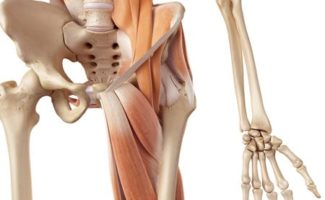
Hip Flexors as a cause of hip pain and popping.
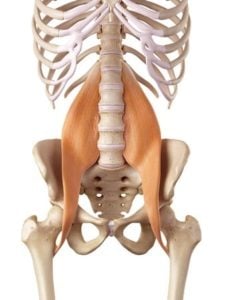
The treatment of a snapping hip tendon is usually accomplished with physical therapy. If you have had pain and snapping for a while then you may develop an area of inflammation. If that area stays inflamed despite PT you may require an injection. The injection is usually performed using an Ultrasound machine, which can also confirm that the psoas is the cause of the snapping and popping. On very rare occasion, a surgeon will need to release the psoas tendon from the femur if it continues to snap and pop despite therapy and injections.
Overtraining: A common cause of running groin pain.
Most new runners, and even some experienced runners simply run too fast, too often. They do not understand the concept of base building and the fact that their muscles, tendons and bones need time to adapt to changes in training. Most of your runs should be at a conversational pace. Only one or perhaps two runs per week should be training runs such as hill repeats or trach work. Runners should not advance their pace or distance more than 10% per week. Otherwise they risk developing overuse injuries.
Poor Recovery: A common cause of running injury
The best trained runners have a firm recovery plan. Recovery allows your heart, muscles, bones and tendons to recover properly from your training efforts. Overtraining will actually cause a decrease in your fitness level and a decrease in your strength, endurance and stamina. Respect your bodies need to recover. Take a least one or two full days off per week if you are a beginner or moderately advanced runner.
Femoral Neck Stress Fractures: The most dangerous cause of groin pain running.

Femoral neck stress fractures occur more commonly in women. They are particularly more common in very active thin women. These women typically have altered menstrual cycles too. Many will have low vitamin D levels which might contribute to the development of stress fractures.
We worry a lot about a femoral neck stress fracture in runners with complaints of groin pain. If a runner develops groin pain that persists from the first step of a run through the last step, you should consider being examined by a Sports Medicine doc.
Many runners delay seeing a doctor because they think that they only have a muscle strain. They don’t think that they should be able to walk with a stress fracture in their hip. That is not true. Most runners with femoral neck stress fractures come walking into the office. They are not on crutches.
A potential femoral neck stress fracture in a runner is considered an urgent issue. We will immediately place you on crutches and you should not put any weight on your leg. We will usually order a test called a bone scan or an MRI to confirm that a stress fracture exists. A normal plain X-ray does NOT rule out a femoral neck stress fracture.
Whether or not a femoral neck stress fracture require surgery depends on the type of fracture and its location. Some fractures will heal with crutch walking, some fractures will require a few screws to hold the fracture together. Most femoral neck stress fractures heal very well. Most runners will be able to return to an active running career within a few months after the fracture has healed.
Hip and groin pain in runners is common. Most cases will resolve on their own or with the help of a trainer or physical therapist. Deep groin pain with each and every step requires urgent evaluation for a stress fracture.
In other posts we have discussed other common causes of hip pain. FAI and labral tears of the hip can also be responsible for hip pain in runners. Although, FAI is a more common cause of hip pain in athletes involved in cutting, pivoting and twisting sports such as soccer.


